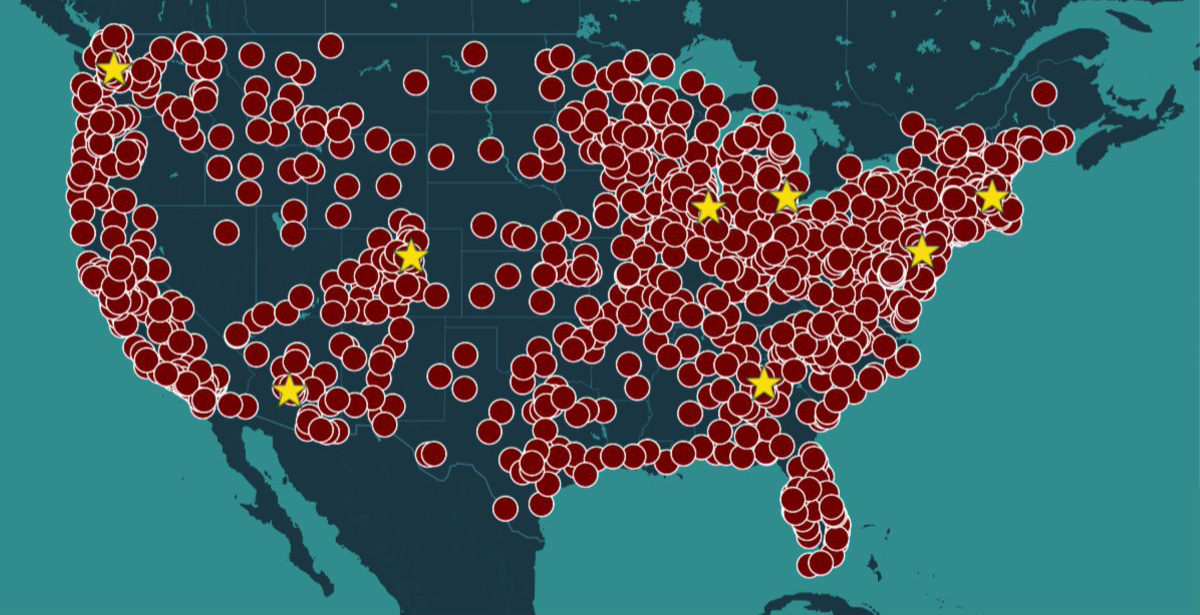
Sarah Parker was just 19 when she cut her teeth as an activist, camping out at Occupy Columbia in South Carolina during the fall of 2011 as the Occupy Wall Street movement swept the nation.
She later moved to Florida, got involved protesting with Black Lives Matter after the 2014 killing of Michael Brown in Ferguson, Mo., then launched a statewide organization, Voices of Florida, to defend reproductive freedoms in the state.
Now, Parker, 32, a mother of two living in Sarasota, is helping power the burgeoning pro-democracy, anti-Trump movement known as 50501, which expects to draw tens and possibly hundreds of thousands of Americans into the streets for the nationwide “Hands Off!” protest happening this Saturday, April 5, in what is also being called People’s Veto Day.
“We’re fighting for the Constitution. We’re seeing Trump take an executive pen and literally put a sword through it,” said Parker, a national organizer with 50501.
“This is a people’s movement to make America a place of equality, and that means we have to roll back and reverse everything [Trump] has done. That means fighting to have him removed, or at least having Elon Musk removed, because he’s not an elected official.”
Parker said the protest’s main goal is to “push back against Project 2025, and the actions of the administration that are following the guidelines of Project 2025,” referring to Trump’s extreme rightwing blueprint to dismantle the federal government.
Demonstrations are planned in more than 1,000 U.S. towns and cities, with the largest events expected to be held in New York City, Chicago, Los Angeles, Philadelphia, Phoenix, and Washington, DC. More than 110 protests have been confirmed in California alone.
According to Hunter Dunn, the public relations director for 50501 based in Los Angeles, their group anticipates some 10,000 showing up to rally Saturday in downtown L.A.
“We are protesting so that we can slow down and reverse the actions of the government, and the people in 2026 and 2028 will go into the ballot box and vote in new candidates who will bring about changes to make sure that none of this ever happens in our country again,” said Dunn.
America is fast approaching “the point of no return,” he warned, “when something is a fully fascist government, as opposed to a fascist party in power.”
Yet, after only 10 weeks of Trump in power, he added, already “we’re seeing discontent [as] more and more people stand up every day declaring they are against the way this country is going, and steps need to be taken to peacefully protest against this administration.”
The 50501 movement began just days after President Trump took office, when a Reddit user in Pennsylvania posted a simple proposal that quickly went viral: 50 protests, 50 capitals, 1 day.
The movement’s first nationwide day of action on Feb. 5 brought between 25,000 and 50,000 protesters into the streets to voice opposition to the Trump-Musk regime. The next protest, held two weeks later on Feb. 17 and billed as “No Kings Day,” drew around 100,000 demonstrators.
“And it’s going to be way more coming out on 4/5,” said Dunn. “People say it takes a village to raise a child. I like to say it takes a lot of villages to raise a protest group.”
Parker said she first came across 50501 on the social media app Signal. Having participated in organizing efforts at Occupy, Black Lives Matter and other movements over the past decade, Parker noted, “this is the first time there is a living ecosystem that is all connected.”
“I don’t think any of us thought it was going to be this big,” she said of the rapid rise of the movement. “It felt legitimately organic.”
Now, “organizers who have never organized a day in their life are on the ground, working, pushing forward—we’re building a plane while flying it,” Parker said, by “being in the streets, at town halls, rallying and making our voices heard.”
The central message, she said: “Protect our Constitution and our constitutional rights.”
Parker’s organization, Voices of Florida, is among dozens of groups including Indivisible, Women’s March and Political Revolution that are partnering with 50501 to build a popular and enduring opposition to the Trump agenda.
In particular, as Trump and Musk train their sights on destroying government at the federal level, Parker said she sees an opportunity for organizers to turn the fight to the state level, where they can win on issues from California to Florida.
“Now you have a hundred different groups in these different cities, and that’s real power to go fight on the state level,” Parker said, because “one thing that 2025 will do [is] throw legislation back to the states.”
Dunn, a student journalist and political science major who is about to graduate from Pepperdine University, said he caught the bug for politics at an early age. Born in 2002, he witnessed his first presidential election at age six when Barack Obama defeated John McCain.
Later, as a senior in high school during the 2020 pandemic and George Floyd protests, he volunteered with a student group seeking to implement ethnic studies and social justice standards into the curriculum.
The group faced vocal opposition from members of the Proud Boys, Mass Resistance and other rightwing extremist organizations that targeted his school. But ultimately, 80 percent of the community supported the students’ demands and their goals for the curriculum passed unanimously.
Dunn, who has worked on campaigns at the school board, district board supervisor, and state assembly levels, said he now sees an incredible array of activists getting involved at the grassroots to protest the Trump administration.
“We have people coming from all walks of life, [those who have] never organized before, or it’s their first time, or they’ve been organizing since the Vietnam War, or since Occupy,” Dunn said. “We have people who work full-time, teachers, students, union workers, unemployed, retirees — from ages 1 to 93, showing up to protest.”
Dunn said some people join 50501 by showing up at demonstrations and meetings, while others reach out online through social media. The L.A. group tends to get together in person about once a week to talk shop, make flyers, or even “just go bowling,” he said, and members frequently communicate by text, email, Zoom calls, Google meets, or by hanging out on Discord or Signal.
“People show up [and say], ‘We want to get more involved than just coming to the protest—we want to help put on the protest, organize, volunteer our time, help out the community,” he said, while describing the movement’s decentralized structure as “entirely volunteer led and run.”
A person needs to agree with only four basic points to be a part of the movement, Dunn added.
“If you are pro-democracy, pro the Constitution, against executive overreach, and you’re willing to peacefully protest to make your voice heard, you’re 50501.”
Parker reiterated that many of those now helping to organize the protests have taken lessons from Occupy, Black Lives Matter, Indivisible, the Women’s March and other social movements that have captured headlines in recent years.
“When you’re standing in solidarity with those who did this before, that’s real power,” Parker said. “You’re watching hundreds of different organizations come together under one umbrella, one movement, to say: ‘Hell no!’ The American people are upset, they are pissed, and they want their voices heard.”
She added, “We need to make sure there’s a sign of resistance every time we can. We’re not going away, we’re not being quiet, we’re utilizing our First Amendment rights because we need to always fight for that Constitution.”
















